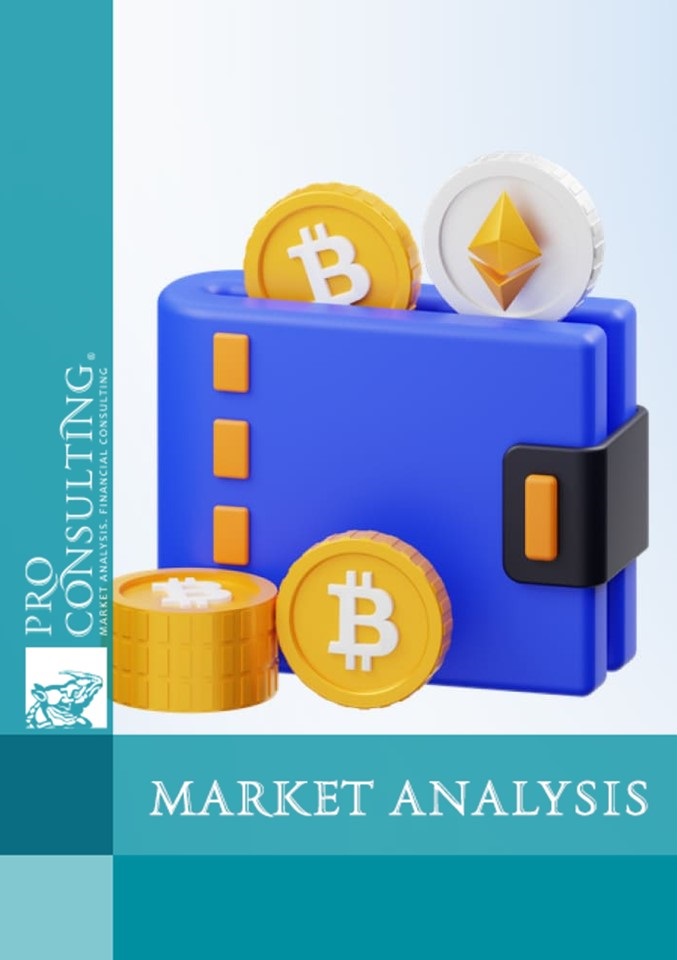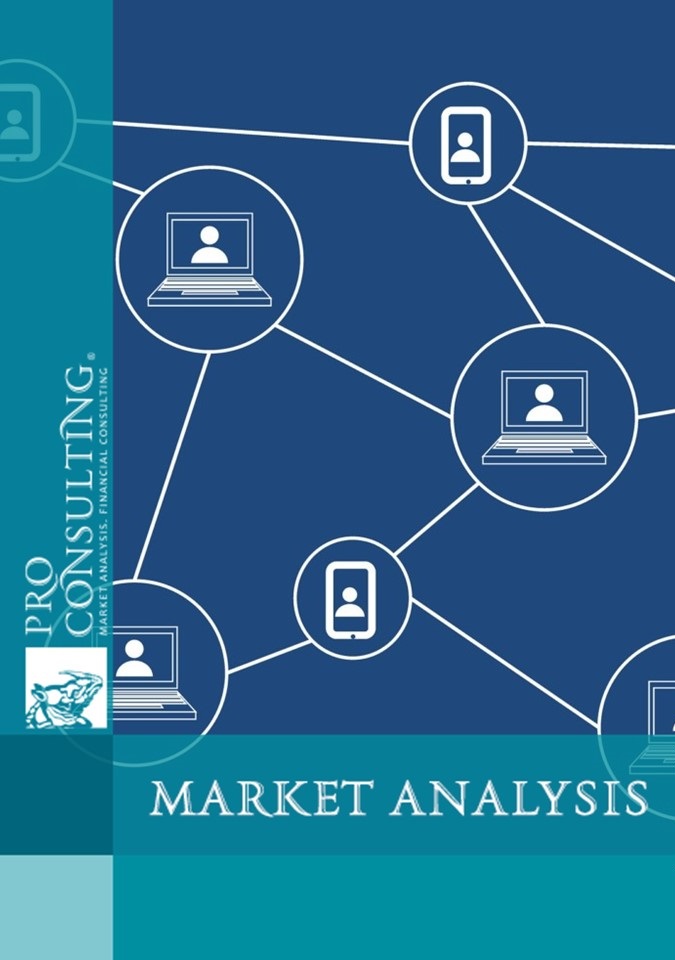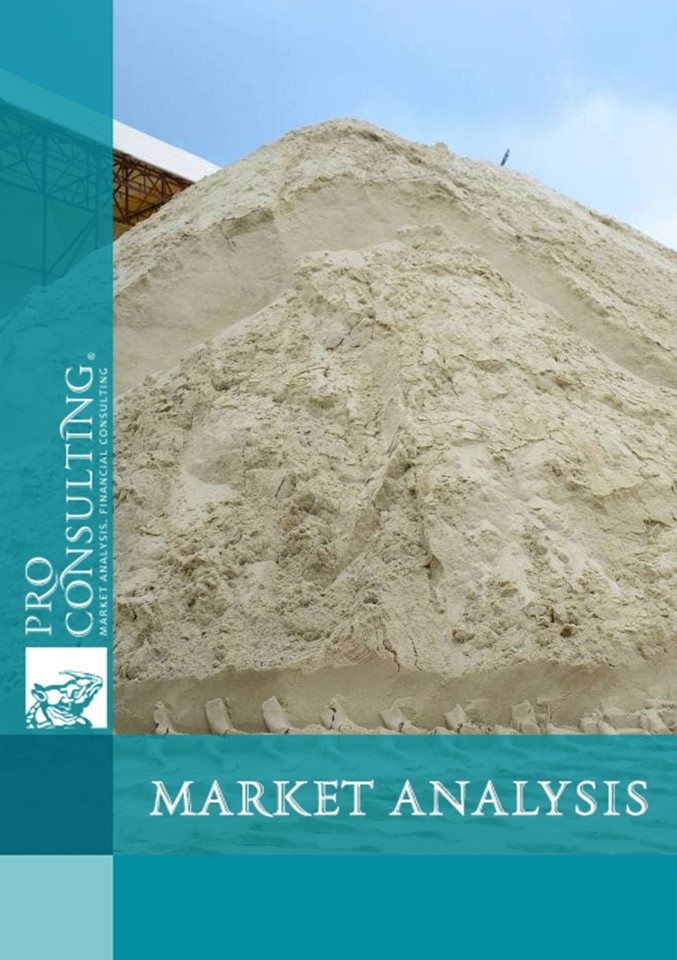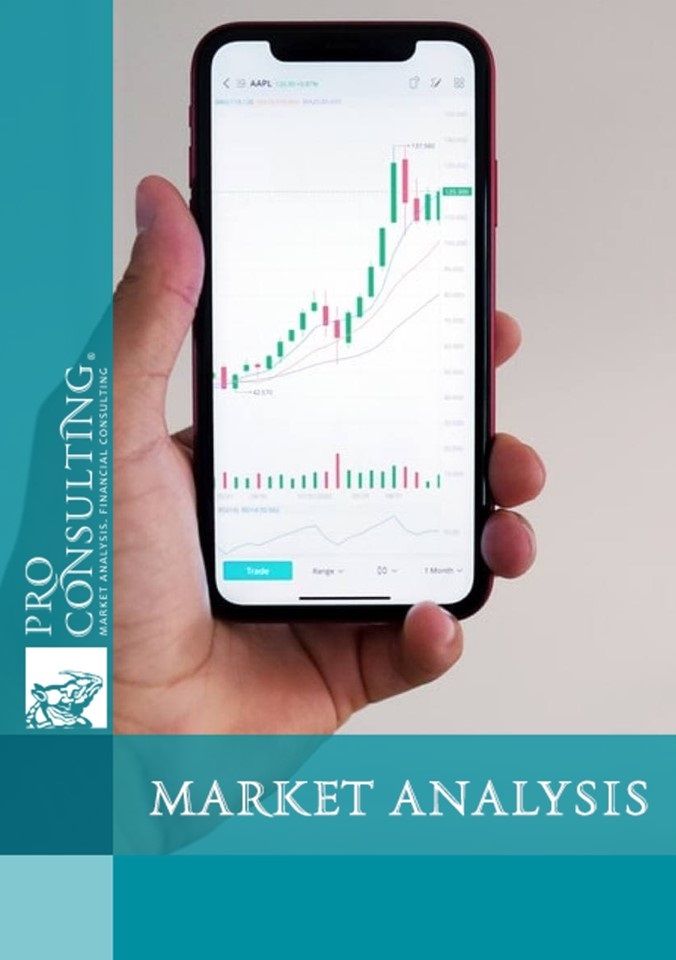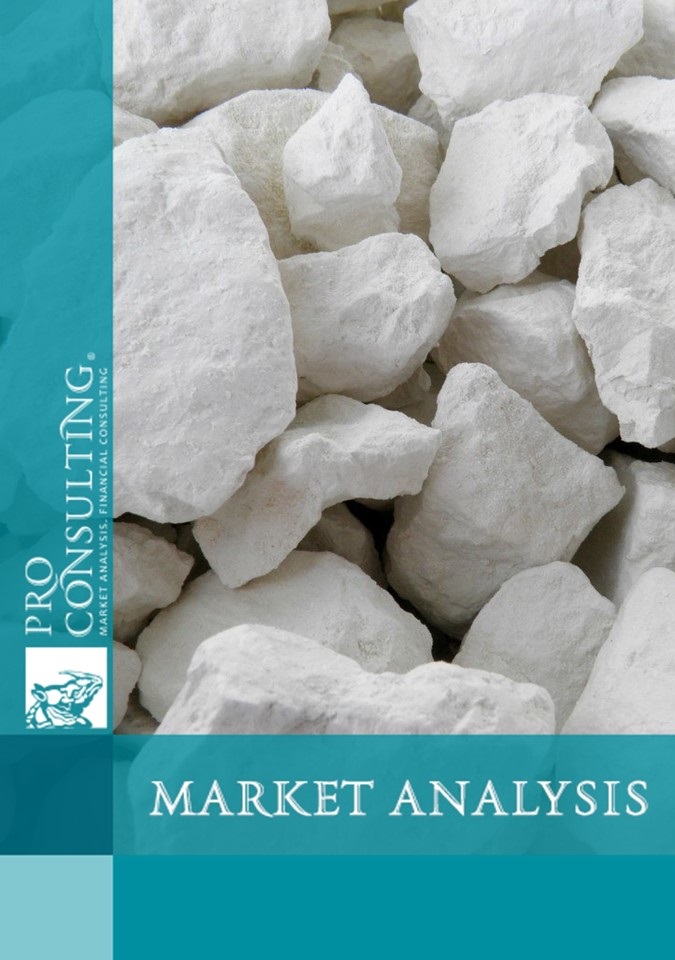Market research report on the global cryptocurrency market. 2022 year
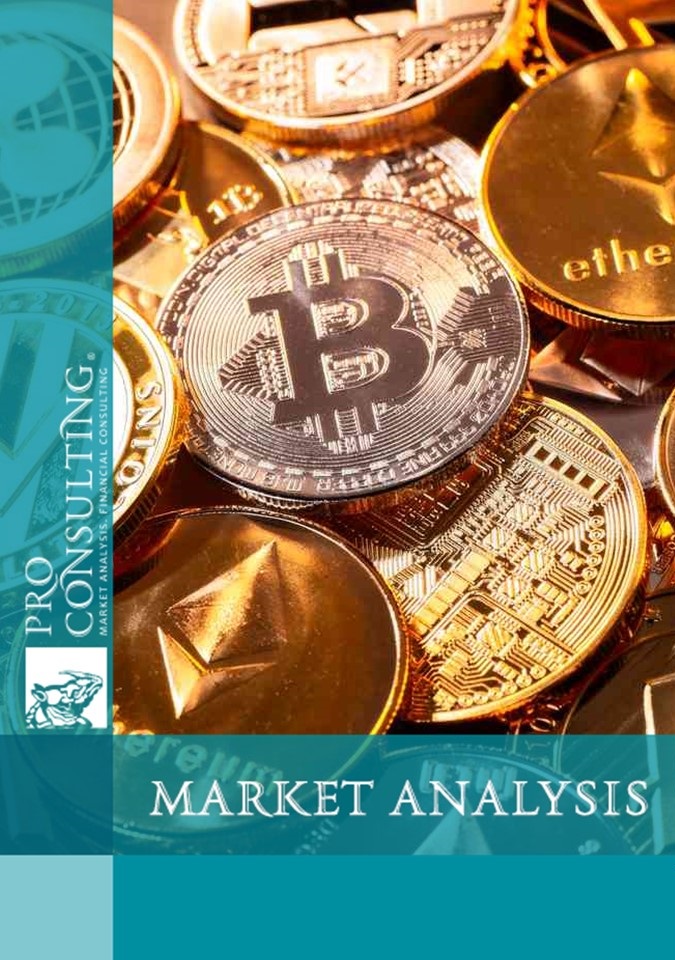
| Date of Preparation: | August 2022 year |
| Number of pages: | 67, Arial, 1 interval, 10 pt |
| Graphs and charts: | 25 |
| Tables: | 17 |
| Payment method: | prepayment |
| Production method: | e-mail or courier electronically or in printed form |
| Report language: | ukrainian, russian, english |
- This report can be updated and customized based on your business goals; you can also purchase part of report (no less than 50%) at a more affordable price
- Failed to find your market research report? - contact us
- You can also order feasibility study and business plan for your business idea




Detailed contents:
1. Definition of the boundaries of the study and description of the terminology of the study (introduction to the description of the goals and objectives of the study)
2. Description of the blockchain
2.1. Description of the fundamental essence and principles of the blockchain (difference from existing technologies). Types of blockchain and their characteristics
2.2. Reasons for creating a new technology (what needs did not cover previous technologies that contributed to the development)
2.3. Value (Blockchain Benefits)
2.4. Blockchain Disadvantages Compared to Other Existing Technologies
2.5. The use of blockchain in industries that can exist without this technology
2.6. Technologies that use Blockchain
2.7. Capitalization of the blockchain technology market
3. Analysis of industries built on the blockchain and will not be able to exist without this technology
3.1 Trends in the development of industries working with elements of the metaverse, the reasons for the development of demand for them
3.2. Dynamics of capitalization of these industries
3.3. The main companies developing projects in industries
3.4. Analysis of criticism of such companies (data security and other parameters)
3.5. Analysis of consumers who prefer blockchain applications and consumers who fundamentally do not use them
3.6. Analysis of the main monetization schemes in the studied industries
4. The main indicators of the cryptocurrency industry and the forecast for the development of cryptocurrencies
4.1. Analysis of the prospects for blockchain replacement of existing systems for recording transaction data (SWIFT and SEPA, Visa and Mastercard)
4.2. Capitalization of cryptocurrencies in 2015-2022, comparison with existing markets
4.3. Capitalization structure by currency recording methods (PoW / PoS / PoH / others) and by currencies
4.4. Geography of involvement in mining and cryptocurrency trading
4.5. Geography of involvement in mining and cryptocurrency trading
5. Demand analysis for cryptocurrencies
5.1. Analysis of demand from private investors (population)
5.1.1 The main motivation of individuals when investing in the crypto industry
5.1.2 Dynamics of investment volume of private investors (individuals) in cryptocurrencies
5.1.3 Analysis of the portrait of a typical investor in cryptocurrencies, motivations and interests (based on the analysis of profiles in social networks)
5.1.4 Analysis of cryptocurrency-related forums, highlighting the main theses describing the interest and prospects of cryptocurrencies
5.2. Among large investors (funds, large business)
5.2.1 The main motivation of funds and large businesses when investing in the crypto industry
5.2.2 Comparison of demand for speculative use and long-term holding of cryptocurrencies
5.2.3 Analysis of the volume of investments of large businesses in cryptocurrencies (in absolute and relative terms)
5.2.4 Analysis of funds and businesses that actively work with cryptocurrencies
5.2.5 Main companies and their characteristics, volumes and investments
5.2.6 Structure by type of core business (investment funds / technology companies / production companies and others)
5.2.7 Analysis of statements by business representatives about the futility of cryptocurrencies (highlighting the main general theses)
5.3. Analysis of profile investors in cryptocurrencies
6. Description of cryptocurrency technology
6.1. The essence of cryptocurrency
6.1.1 How technologies for recording account balances
6.1.2 As a consensus for value exchange
6.1.3 As an investment asset
6.2. Analysis of cryptocurrency layers (layer 2 versus layer 1) to understand whether the creation of high-quality software based on layers can provide a competitive transaction speed
6.3. Methods for obtaining cryptocurrencies (PoW / PoS / PoH)
6.3.1 Existing methods and their comparison according to the main criteria among themselves and with analogues working in the economy (money, securities, etc.)
6.3.2 Cost of obtaining (technology, commission payments, energy costs)
6.3.3 Centralization and regulation (compatibility of blockchain decentralization principle with government regulation)
6.3.4 Inflation when mining and creating blocks
6.3.5 Transaction speed and technical ability to support a large number of transactions
6.3.6 Security of the consensus model, risks of forks and their impact on volatility, hacks and accumulation of cryptocurrency by one holder (China)
6.3.7 Privacy and censorship
6.3.8 Social norms and social acceptance
6.3.9 Other comparison criteria
6.3.10 Analysis of how PoW is optimal and how Bitcoin can be considered an analogue of the gold standard
7. Analysis from the point of view of state regulation (based on the analysis of the Customer with additions by country and clarification) in the countries under study, as well as the largest world economies
7.1. Legality of buying and selling and paying with cryptocurrency (currency status) by country
7.2. Cryptocurrency mining status
7.3. Legality of using cryptocurrency as an investment asset 58
7.4. The need for licensing cryptocurrencies
7.5. Status of Cryptocurrency as an Asset for Taxation
7.6. Legal status of crypto exchanges
7.7. Prospects for changes in taxation and regulation
7.8. Global movements and associations that promote the legalization of cryptocurrencies, their activity, interaction with governments of countries
8. Analysis of crypto exchanges and other elements of the market infrastructure (exchangers, aggregators)
8.1. Analysis of segment trends in the countries under study and in the world (there is a relationship between the existence of crypto exchanges and the demand for cryptocurrencies)
8.2. The number of crypto exchanges and similar infrastructure elements by country (with a focus on the countries studied) - an indicator of the country's openness to cryptocurrency trading, their legal status, security, privacy and censorship
8.3. The largest crypto exchanges and their characteristics
8.4. Forecast trends in the development of crypto exchanges in the world
9. Forecast indicators of the industry
9.1. Building a technical long-term forecast for the dynamics of the value of cryptocurrencies (based on the retrospective dynamics of prices for major cryptocurrencies) 81
10. Investment attractiveness of the industry
10.1. SWOT analysis of the cryptocurrency market
10.2. PESTLE - analysis of the cryptocurrency market
List of Tables:
1. Comparative characteristics of blockchains
2. Top 5 Blockchain Metaverse Platforms
3. Benefits of blockchain compared to other existing systems
4. The number of holders in countries and the share of holders among the population of the country (TOP-40), 2022
5. Top 20 countries by cryptocurrency usage
6. Percentage of respondents who are interested in investing in cryptocurrencies for various reasons
7. Percentage of the population owning cryptocurrencies, as of 2020-2021 by country
8. Top 10 ETFs
9. Top 10 public companies that invested in bitcoin
10. Private companies that invested in bitcoin
11. Examples of well-known companies that allowed the use of cryptocurrency in their calculations
12. Comparison of models
13. Recognition of the existence of bitcoin in various countries at the legislative level
14. Crypto exchanges that are in demand in the studied countries
15. Characteristics of crypto exchanges
16. SWOT analysis of the cryptocurrency market
17. PESTLE analysis of the cryptocurrency market
List of graphs and charts:
1. Increase in the number of metaverse and Play2Earn tokens in 2018-2022.
2. Comparison of the capitalization of the GameFi industry on different Internet resources, billion US dollars
3. Dynamics of capitalization of the GameFi industry (January 2018 - January 2022), billion US dollars
4. Distribution of capitalization of GameFi cryptocurrencies by major currencies
5. Most Popular Blockchain Metaverse Platforms
6. The evolution of gaming monetization
7. Shares of capitalization of the GameFi and DeFi industries in the total capitalization of cryptocurrency, billion USD
8. Dynamics of cryptocurrency capitalization in 2015-2022 $
9. Distribution of cryptocurrency capitalization by major currencies-2022
10. Capitalization by currency entry methods
11. Active bitcoin addresses
12. Percentage of Internet users who own any type of cryptocurrency (Q3 2021), considering age and gender
13. Estimated cost of owning cryptocurrencies in the EU
14. Distribution of bitcoins by time intervals of transactions
15. The volume of investments of business, government and funds in bitcoin
16. Distribution of public companies owning bitcoin by sector of the economy
17. Major brands accepting payments in cryptocurrency\
18. Comparison of transactional models
19. Timestamp service
20. Mining process
21. 2-year MA Multiplier
22. Stock-to-Flow Model
23. The structure of levels in the blockchain
24. The cyclical nature of the cryptocurrency market on the example of bitcoin
25. Stages of one cycle
